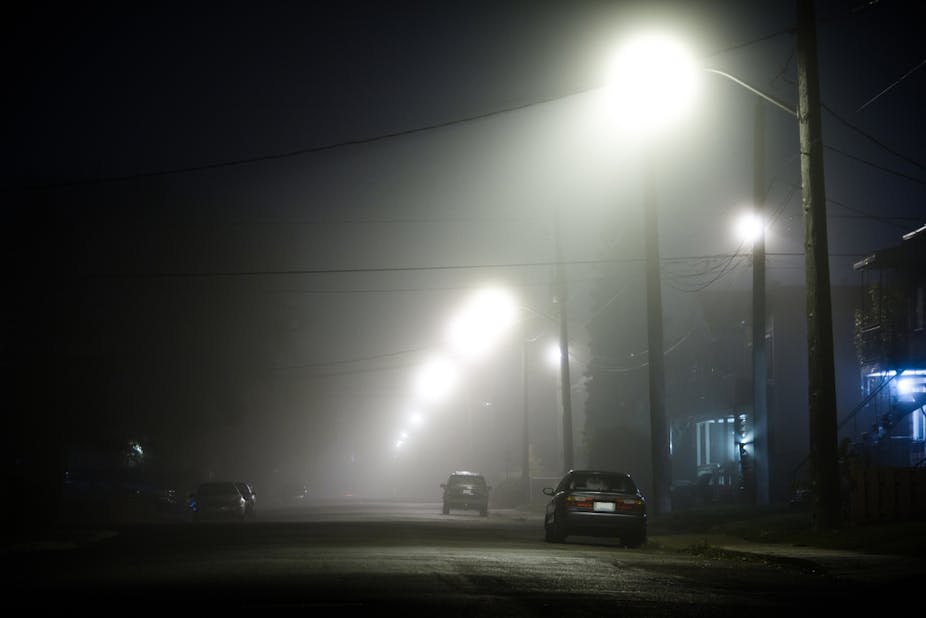Spatial planning from the apartheid era is coming back to haunt South Africa’s formerly black universities. More than 22 years since the country’s transition to democracy, students at these institutions are still travelling vast distances to their campuses. Their journeys take them along poorly lit, badly maintained roads. Their off-campus homes are often in dangerous, barely policed areas.
As recent incidents at one campus reveal, the lack of proper infrastructure on and off campuses leaves these historically black universities’ students very vulnerable to crime.
A common theme emerged throughout my discussion with students from the University of Limpopo after one of their peers had been shot off-campus: everyone wanted more accommodation on campus. The university has recently built new residences, but there simply aren’t enough places in these for all students. There are barely more than 6000 residential places on campus for a population of more than 20 000 students.
The system of apartheid is long gone. The funding models that denied black institutions (which accounted for about half of the 36 universities and polytechnics which existed) the money allocated to their all-white counterparts have been scrapped. But apartheid’s legacy remains at what are now known as previously disadvantaged or emerging universities. These still cater almost exclusively to black African students.
Their history of poor resourcing contributes to their lower research and teaching outputs – the basis on which much funding is allocated. This leaves them with less money to spend on security and building residences. It also means they tend to operate in less well resourced and less well policed communities.
Trauma and fear
In late August 2016 the University of Limpopo’s community was horrified by the news that a male student living in a digs off campus had been shot. He was severely injured. It was the latest in a spate of robberies and attacks, and prompted many other students from the institution to come forward and admit how unsafe they feel both on and off campus.
The university’s Student Representative Council approached local police with a memorandum about safety and security. They complained that many street lights in the areas around campus don’t work.
I spoke with a number of female and male students who told me they feel unsafe at night off campus. None could recall ever seeing police officers in their neighbourhoods, either during the day or after dark. They wouldn’t go out after sunset because they were scared that “something bad” would happen to them. The students said they felt traumatised. One felt that she needed to go for psychological counselling.
There was more of a feeling of security among those students living in residences on campus. They praised campus security guards for being quite visible. Still, some female students felt unsafe when leaving their residences at night to visit the library. Many said they asked male students or security guards to accompany them.
Students who live off campus have no recourse to this service – guards will not accompany anyone to an off-campus address.
More residences are needed
It’s not only the University of Limpopo that has campus residence shortages. The same situation is plaguing institutions around the country. The previously white, historically advantaged University of Cape Town (UCT) has more than 26 000 students but can only accommodate around 6,600 on campus. But at UCT and other comparatively better resourced institutions such as Rhodes University, shuttles are available for students on and off campus.
But more disadvantaged institutions which serve poorer communities are unable to offer these sorts of protections. They are still grappling with apartheid’s funding hangover and the aftermath of the apartheid era’s spatial planning which marginalised the placement of black institutions.
Campuses for black students were situated far from the exclusively white suburbs – kilometres from city centres. A lack of safe, reliable public transport from these areas to students’ homes also makes them vulnerable.
Redressing past imbalances
Universities can only do so much to keep their students safe. They need proper funding allocations to make sure their campuses are well lit and there are enough security systems in place to tackle campus crime. But they cannot do this alone: the Department of Higher Education and Training has a responsibility to redress past imbalances.
The allocation of funding to institutions of higher education needs revising and public/private partnership models must be encouraged so that more on-campus residences can be built and other security infrastructure improved.

